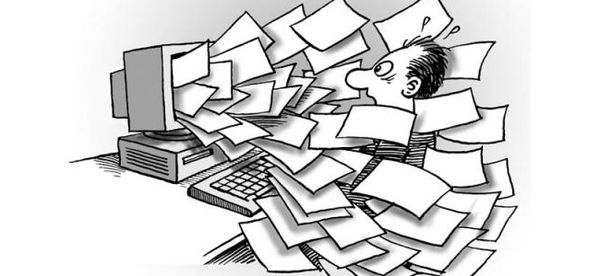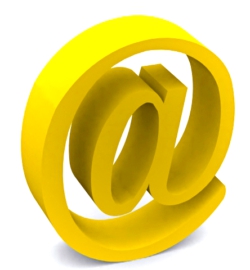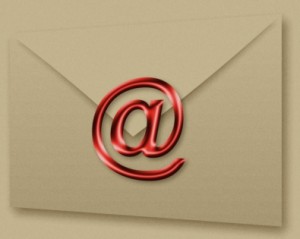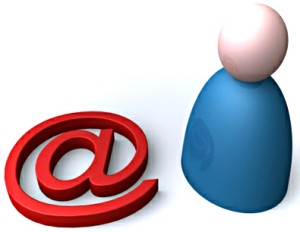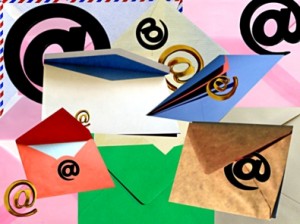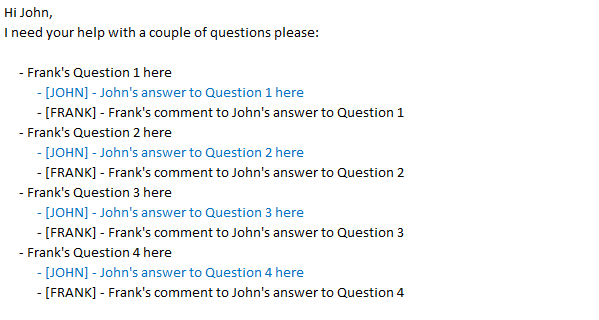Wikipedia describes email as being “a method of exchanging digital messages from an author to one or more recipients“. Sounds simple, but in reality for most of us email is a necessary evil. It may have revolutionized the way we work, but at what cost? Email was the first tool to allow easy message management and instant communication to and from multiple recipients, and while this made life infinitely easier for keeping in touch with colleagues and customers, it has also created a huge tidal wave of data which we have to manage every day. Especially when it’s misused or abused by users.
So, following on from my email management system post that demonstrated how everyone could maintain a clean inbox every day, today I’ll write about a handful of simple rules that help me ensure that my email conversations are short, effective and above all, valuable.
These tricks will help you streamline your communication, produce more effective messages and decrease the number of email messages you have to manage on a daily basis. And don’t forget, if you like the tips, please share them with your friends, family and colleagues. “Teamwork divides the task and multiplies the success“. So do hit the SHARE button and spread the love if you like what you read.
Let’s dive into it …
1) Send solutions and request agreement, rather than asking for opinions.
– EXPLANATION: Many times we send emails asking for opinions on various subjects. This message requires the recipient to analyze the issue and then reply which has two main implications. First it may be that they don’t have all the required info for a good analysis which can delay a response or worse still lead to an incorrect response. Also many people nowadays use a smartphone to check their emails, so if the answer is longer than a couple of words, most people will delay answering until they reach their PC, during which time they may well forget about the whole request. Presenting a couple of solutions asking for agreement (or disagreement) will dramatically improve your chances of getting a quick answer, even if the recipient is reading your email on a smartphone or tablet.
– EXAMPLES: “We have 2 solutions. Solution A has advantages X, Y, Z and solution B brings us Q, W, T. I say we go with solution A. Does this make sense for you?”
2) Keep it short and use bullet points.
– EXPLANATION: I can’t stress this enough – no one likes reading 2 page emails. Make it easier for your recipient to scan the email and extract the meat in an effortless way!
– EXAMPLE: “We have 2 solutions:
- Solution A has advantages:
- X
- Y
- Z
- Solution B brings us:
- Q
- W
- T”
3) When an email exchange becomes too long … cut to the chase by picking up the phone!
– EXPLANATION: Sometimes an exchange of email messages back and forth will add hours and even days to a problem resolution. If you notice that things are slowing to a crawl pick up the phone and get it done! For those of you who need to keep a copy of the conversation for their records, you can send an email at the end of the call minuting the subjects discussed over the phone.
– EXAMPLE: “John, I appreciate you took the time to join me and discuss the today’s situation. For future reference, here is a brief overview of the subjects we addressed during our call:
- Subject A
- Action: insert actions here
- Deadline: insert deadline
- Assigned to: insert who will take care of it
- Subject B
- Action: insert actions here
- Deadline: insert deadline
- Assigned to: insert who will take care of it”
4) Use Reply To All ONLY when all the recipients need to see the information
– EXPLANATION: Nothing is more boring than receiving emails which have no value for you. Save your co-workers, family and friends from the burden of email overload and only send each recipient messages which are relevant to them directly. Yes I know that most times this action is used to ‘cover my backside‘, but it is annoying and ultimately can earn you a bad reputation if you abuse it badly enough.
5) Use BCC instead of CC when applicable
– EXPLANATION: When multiple recipients are in a CC exchange, hitting Reply To All will send each one a copy of the answer. When the recipients are in BCC, hitting the Reply To All button will only email back the sender, avoiding irrelevant email traffic from going to the rest of the team.
– EXAMPLE: Let’s say you send an action plan to 5 people where each recipient has to report his updates at the end of the day. These updates are relevant only to you and not to the other team members so this is a perfect time to use the BCC function instead of a CC! (which incidentally means ‘carbon copy’ from the old days with typewriters and carbon sheets)
6) If you want something, ask for it!
– EXPLANATION: Many emails “hang” without answers because the recipient does not realize something is required from them. By including a call to action in your message, which clearly states your expectations, you will help the recipient act on your email. If no action is required, mention it specifically to make sure people know nothing is expected from them.
– EXAMPLE 1: Use “John told me the report was missing data. Can you please re-do it and and re-send it to all recipients by 6PM tonight???” instead of “John told me the report was missing data.”
– EXAMPLE 2: Should no action be required you can use “This is a FYI email” or “Please note this email is a FYI and there’s no action required other than filing it for future reference”
7) Always include enough info to make the email actionable – use the 6W’s: Who, What, Why, Where, When and How (where applicable)
EXPLANATION: A clear, concise email explaining the 6W’s leaves no place for interpretation and gives accurate information about your expectations. BTW – keep in mind you can be concise and give plenty of info about a task in less than 2 lines!
EXAMPLE: “John, please advise Frank that I need you guys to implement the new billing software by Tuesday, 5PM as we plan launching it Wednesday, 9AM. Please make sure you test it at least 8 hours before the deadline.”
8) Make it clear who can help … if help is needed
EXPLANATION: When delegating tasks, explaining procedures or presenting more complex information, make sure you include a resource for additional help. This helps avoid those situations where the recipient fires off a quick question about a point which is really unecessary. Especially if they use Reply to All.
EXAMPLE: “John, please advise Frank that I need you guys to implement the new billing software by Tuesday, 5PM as we plan launching it Wednesday, 9AM. Please make sure you test it at least 8 hours before the deadline. For any questions related to the implementation contact Mike (1-800-111-11111) from the billing company, anything related to the servers contact Jonathan (1-800-222-2222). For everything else call me on 1-800-333-3333”
9) Send different tasks in different emails.
EXPLANATION: While this looks like increasing the number of emails (due to splitting different subjects into separate messages) it actually helps with managing email flow, as each message can be archived when the task is completed. The messages are also easier to spot and action in the inbox due to the task specific email subject.
When you’re forced to include multiple pieces of info in one email make sure you use bullet points to help recipients scan the information more easily.
10) Use inline answering
EXPLANATION: When you receive an email with multiple questions related to one or more topics, make sure to answer them ALL using inline answering. This will help the recipient scan for the relevant issues and chop the subject into easily addressed topics for action. This is especially important when multiple people are contributing to a conversation. Check the example below:
Combining the above tricks with the email management practices I described in The 4 Step Method To Beat Email Overload, Keep Your Inbox Empty And Restore Peace To Your Soul (Mostly) should bring you some email piece of mind.
And last but not least, please remember to be patient. As with any other skill, mastering email communication requires time and effort. Make sure you start using the above tricks and personalize them for your particular situation. Share them with your family, friends and co-workers and work together on it! You will find that your communications will become much more effective and far more efficient!
I’d love to hear about your own particular tricks in the comments – what are your favorite ways to keep your email volumes low and streamline your written communications?


